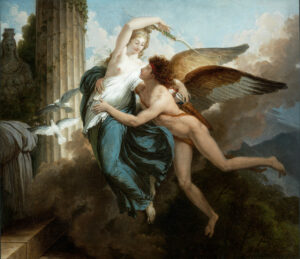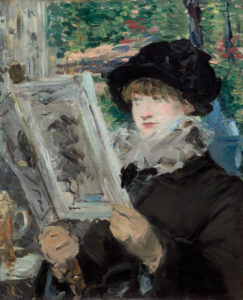
Berlin, 1913. Marsden Hartley lays down his brush charged with vivid pigments. The American artist has just met Kandinsky. This encounter will transform his painting. He abandons figuration to plunge into pure abstraction.
An Explosion of Primary Colors
Observe this vibrant canvas. Geometric forms clash in a chromatic ballet. A pointed yellow trapezoid dominates the center. Blue, green, and red rectangles overlap. Black structures the whole with force. Hartley applies his oil paint in thick touches. The pictorial matter is rough, almost sculpted. Each brushstroke remains visible. Primary and secondary hues dialogue without mixing. This technique creates a tactile surface, almost vibrating under the light.
The Influence of Der Blaue Reiter
Hartley discovered the German avant-garde with fascination. He read the almanac Der Blaue Reiter and Kandinsky’s treatise on spirituality in art. These readings transformed his practice. The artist moved away from objective reality to explore spiritual expression. His simplified forms evoke Kandinsky’s Improvisations. Triangles and trapezoids become abstract entities. This work marks the peak of the Russian painter’s influence on Hartley.
Marsden Hartley, an American Pioneer of Abstraction
Marsden Hartley (1877-1943) was one of the first American modernists. Encouraged by Alfred Stieglitz, he traveled to Europe to nourish his art. In Berlin, he developed a unique pictorial language. His work oscillates between mystical abstraction and personal expression.
Think about it
💭 And you, when you watch these forms assemble like a cosmic puzzle, what emotion do you feel? Can abstraction touch your soul as much as a realistic landscape?
About This Work
- Abstraction: Blue, Yellow and Green
- Marsden Hartley
- circa 1913
- Oil on canvas,
- 63.98 × 48.58 cm
- Los Angeles County Museum of Art (LACMA)






